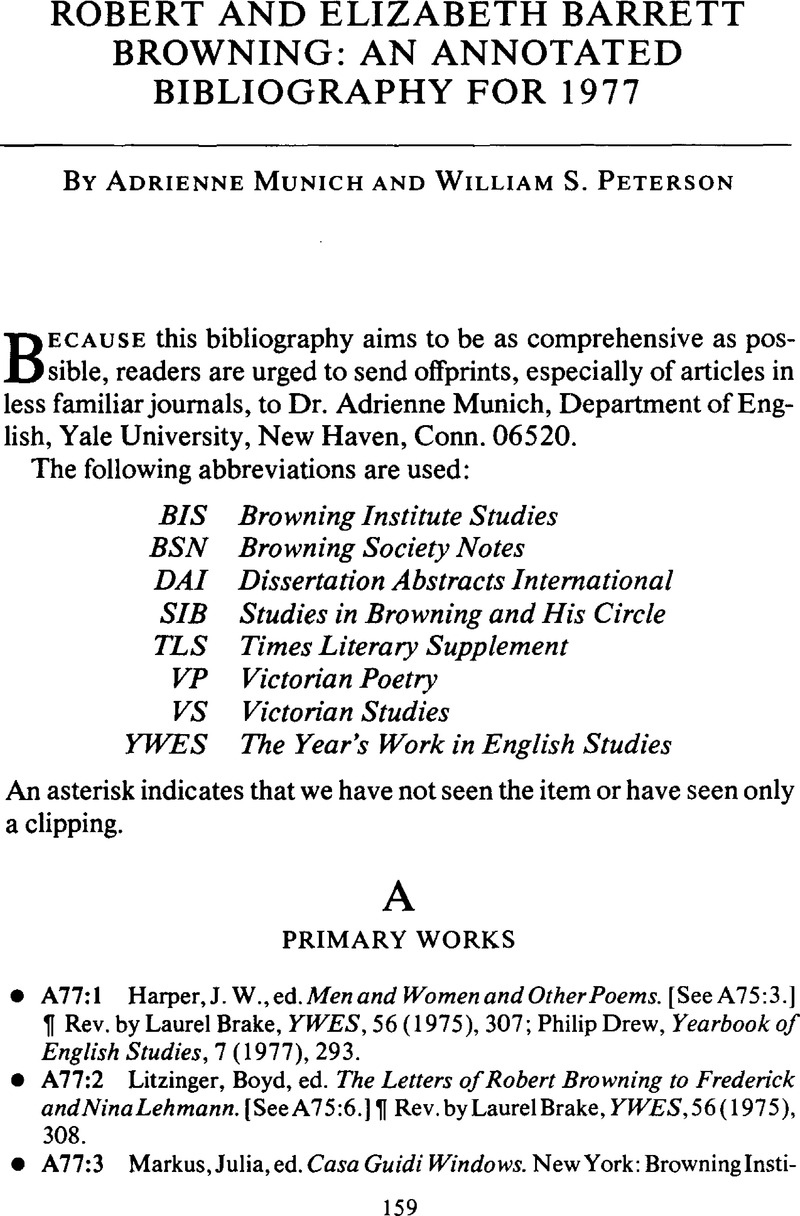• C77:84Peterson, William S. “
‘My Spiritual Face’: A Newly Discovered Portrait of Mrs. Browning.”
BIS,
5 (
1977),
1–
22. ¶ A variant of the Field Talfourd portrait in the National Portrait Gallery. (The portrait is reproduced in color in the frontispiece.) See also
Daily Telegraph (London), 17 Aug. 1977*; Earl Arnett, “Browning Portrait ‘Exciting Find,’”
Sun (Baltimore), 24 Aug. 1977, pp. B1, B4;
The Times (London), 5 Sept. 1977, p. 14; Israel Shenker, “An Elizabeth Browning Portrait Comes to Light,”
New York Times, 7 Sept. 1977, p. 32; George E. Jordan, “Browning Portrait Discovered,”
Times-Picayune (New Orleans), 29 Dec. 1977, Sec. 3, p. 9; “Ms. Browning's ‘Spiritual Face,’”
Art News, 76 (November 1977), 34.
Google Scholar 